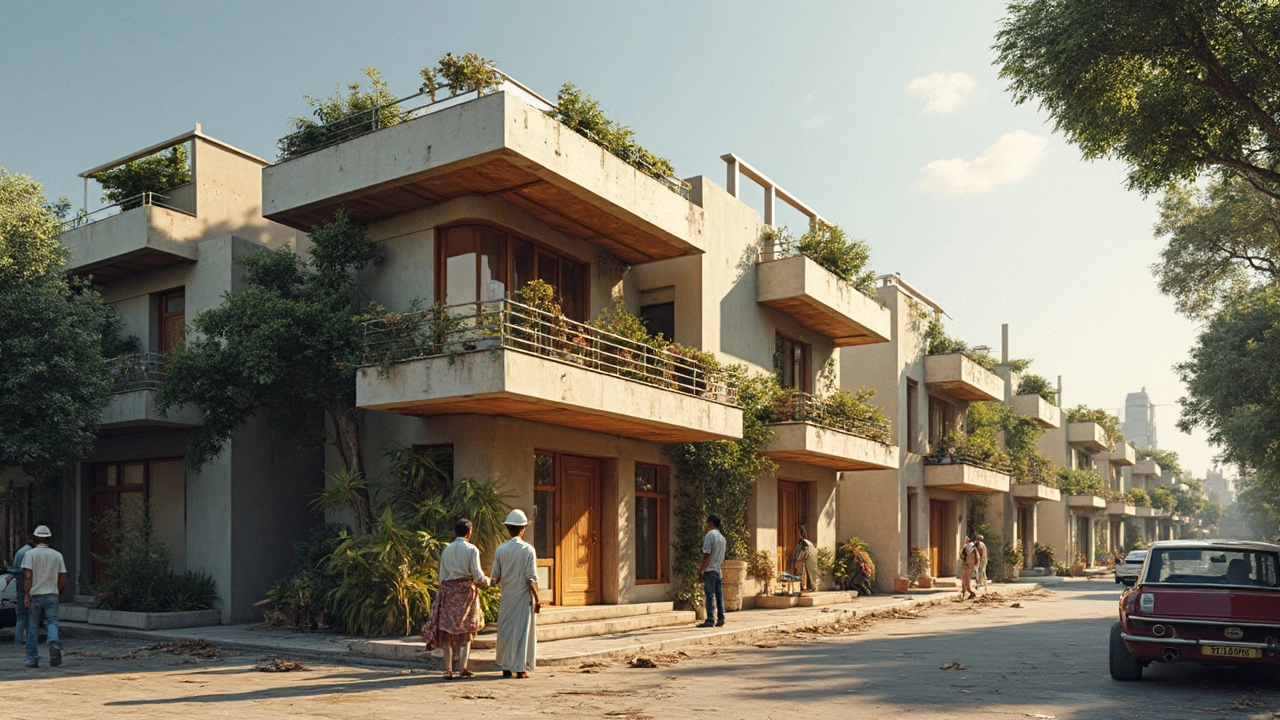Cheapest Ways to Extend Your House: Low-Cost Home Extension Ideas in 2025

Brick by brick, Manchester’s suburbs are being stretched. Property prices have soared, and squeezing an extra square metre out of your existing home can be worth more than any designer kitchen. But why is adding space often eye-wateringly expensive — and is there a cheaper way to gain that precious living room, kitchen nook, or maybe a new bedroom?
Here’s the thing nobody admits: The cheapest way to extend your house isn’t just about throwing up four walls and a roof. It comes down to clever planning, the right materials, and asking if you even need to hire a builder. The average single-storey extension in the UK is now nudging £2,000 per square metre in 2025, say those who’ve just redone theirs. Sounds off-putting, but once you know where to save (and splash out wisely), things get interesting — fast.
Understanding the True Costs of House Extensions in 2025
Busting a myth right here: there’s no magical £10,000 extension package being handed out anywhere in Manchester or London. Costs add up. Labour, materials, planning permission, VAT, the tea you reluctantly brew for builders – all these play a part. On average, a basic single-storey extension might set you back between £1,700 and £2,200 per m². If you’re after something more upmarket or in a high-demand area like Didsbury, prices can hit £3,000 per m² before you know it.
What trips people up? Unexpected groundworks. Maybe your soil’s poor, or drains need rerouting. Planning and legal fees can kill the mood too: a full planning application costs just £258 in England, but factor in drawings, surveys, maybe even a tree report. Don’t forget VAT at 20%. Here’s a handy table so you can break down a typical 20m² budget:
| Cost Item | Low Estimate (£) | High Estimate (£) |
|---|---|---|
| Labour | 9,000 | 15,000 |
| Materials | 7,000 | 13,000 |
| Professional Fees | 1,500 | 3,000 |
| Permits / Legal | 500 | 900 |
| VAT | 3,600 | 6,400 |
| Total | 21,600 | 38,300 |
That’s the price of a new car just vanishing into your walls. But don't get discouraged — it’s all about where you can shave off hundreds or even thousands without making your house a DIY disaster.
The Lowest-Cost Types of House Extensions
Start with the golden rule: simple shapes save cash. Forget ornate curves or fancy sliding glass. A boxy, rectangular extension costs the least to build — fewer complications, less custom work, and every tradesperson knows how to do it in their sleep. If you want real numbers, a basic rear single-storey extension can start from £18,000 for a small 12m² addition, if you keep it simple and do some of the work yourself.
So, what’s genuinely the cheapest way to extend?
- Budget single-storey rear extension: The classic. Stretches your kitchen into the garden or creates a bigger lounge. Stick to a flat roof, use standard bricks, and keep plumbing in the same place. Consider bi-fold doors only if they're in your 'must-have' list and you've found a good deal at a builders’ merchants clearance section.
- Conservatories and orangeries: Surprisingly underrated. In the UK, polycarbonate-roofed conservatories start from just £8,000 for a small one, especially if you order supply-only kits and hire a local builder to assemble it. Glass-roofed orangeries cost more but still undercut traditional extensions by 25% or even more.
- Garage conversions: If you’ve got an attached garage, turning it into a habitable room can start at just £9,000-£15,000. No foundations, no new walls. Just insulation, windows, wiring, and a heater. Many skip planning permission using permitted development rights.
- Porch additions: Small and simple, but if you only need a bit more cloakroom or storage, porches are often under £6,000 and don’t always need permission.
- Prefabricated extensions: Pre-made sections arrive, get bolted together, and are liveable in days. Modern prefab pods or SIP (structural insulated panel) extensions can start under £20,000, and you save on both time and mess.
If you’re in a rush or can’t stand endless dust, consider going modular or prefab. Loads of UK companies now offer small brick-clad pods that actually look pretty slick – not like those old garden sheds from the 1980s.

How to Slash Extension Costs Without Sacrificing Quality
Here’s where smart decisions make you look like a genius. It starts with design. Go for a shape that’s easy to build and keep it on one level if possible. Every extra corner or step in roof height is another hundred quid out the door.
- Use local builders, but always get three quotes. A builder down the road is usually cheaper than firms shipping teams from an hour away.
- Skip the architect if your extension is truly basic. Some draughtsmen or qualified plan drawers charge a third of what architects do. For simple extensions, it’s legal and just as safe.
- DIY where you’re confident — but be honest about your skills. Painting, fitting insulation, or running cables for the electrician saves cash. Never tackle structural or gas work without a pro!
- Source materials yourself. Bulk-buy bricks, doors, and windows from local reclaim yards. Manchester’s salvage spots have hidden gems for next to nothing, and you cut out the builder’s markup.
- Time your build off-peak. Summer’s busy, especially after the pandemic DIY craze, but late autumn or early winter finds builders less busy and more negotiable.
And here’s a tip most folks overlook: keep your extension within ‘permitted development’ rights. Go bigger, or get greedy with height, and you’ll get bogged down with planning apps and maybe neighbours objecting. Stay within limits, and you save months — maybe thousands on red tape.
Check this clever move: instead of a full brick extension, some folk use SIP panels, which are ultra-insulated chunks sandwiched together. Can be finished to look like your house, go up fast, and you save a mint on lengthy scaffolding or groundworks. Plus, if you can do the painting and flooring yourself, the budget stretches even further. Even simple choices like opting for plasterboard over traditional wet plaster shave off both cash and weeks of mess.
Common Pitfalls and Money-Saving Mistakes People Make
Now for the things everyone wishes they’d known before shovels hit the dirt. First, don’t assume cheapest always means best. Poor insulation or dodgy windows can rack up energy bills. Low-cost, badly laid foundations set off a chain reaction of expensive fixes down the line.
Another killer mistake? Rushing to save on professional advice. Sometimes it’s smarter to pay a structural engineer for a day than pray you’ve not breached building control. A poorly designed roof or lintel can void insurance or even get you a ‘do not occupy’ order from the council.
Watch out for VAT traps. Builders working on ‘new builds’ charge zero VAT, but extensions on existing homes don’t — unless your place’s been empty for over 2 years (a rare loophole). If a builder’s cash quote sounds suspiciously cheap, steer clear or you might end up with work that doesn’t comply with building regulations and no paper trail if things go wrong.
Don’t forget neighbours. The Party Wall Act means if you build too close to their house, you’ll need written agreement, which can run into legal costs if they object. Always check property boundaries up-front.
Last big gotcha: overspending on things that don’t add value. Sunken lighting, steel bifolds, or an orangery with underfloor heating can gobble up a £20,000 budget without adding much to your house’s resale price. Keep it simple, light, and functional if you want the best return.
Here’s a final rundown to keep your eye on savings:
- Keep design simple and modular
- Stick to permitted development where possible
- DIY only what you genuinely know how to do
- Get written quotes and compare at least three
- Shop materials from reclaim yards and trade suppliers
- Don’t cheap out on insulation or structure
If you play it smart, stretch every pound, and do your research, you can get a livable, value-boosting extension for a fraction of what your neighbours paid for that ‘Grand Designs’ vanity project. And who knows — you might even enjoy the challenge.